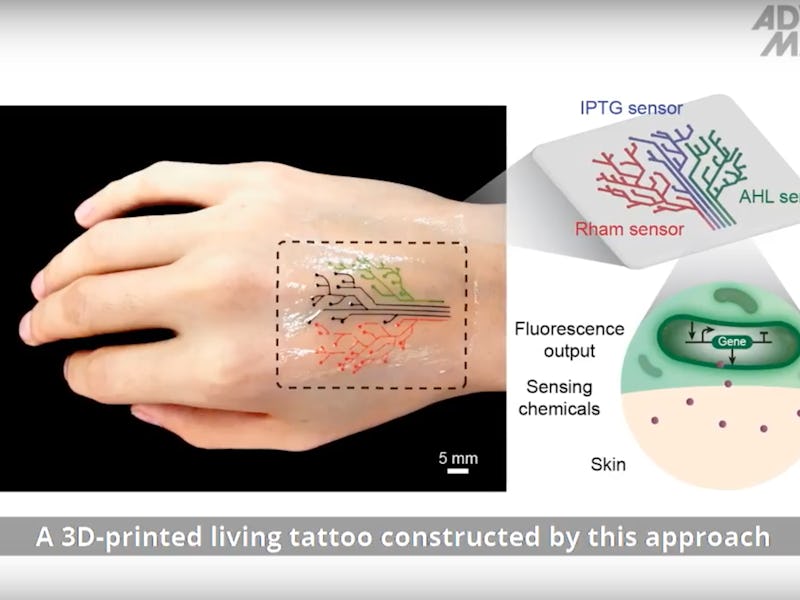This 3D-Printed ‘Living Tattoo’ is the First Step to Living Computers
See grandma, tattoos can help science.

Everyone has a different reason for getting a tattoo. I personally strive to keep a balance between the ones that actually mean something and the ones that just look cool. That way, when my grandma asked me what the hell the cartoon bird on my arm means I give her a long spiel about how it symbolizes the importance of family that will keep her from ever asking me again. Also, the bird looks cool.
No reason I have for getting one of my tattoos comes close to the reason for the tattoo up top.
In a research paper published in Advanced Materials, Researchers at the Massachusetts Institute of Technology have figured out a way to 3D-print specially designed cells into flat designs, like the tattoo above, and into 3D structures. It’s a technique they believe could possibly be used to create a “living computer,” or a structure made up of living cells that can do the stuff your laptop can.
The tree isn’t technically an actual tattoo, as there’s no ink involved. Rather, it’s a mixture of engineered bacteria and hydrogel that was shot out of a 3D printer. While this design is pretty cool, the technique being demonstrated here is the real showstopper.
Instead of the plastics or nylon usually used for 3D printing, the team used modified bacteria that are able to withstand the process of being squeezed out of a nozzle. Some of the cells were programmed with the ability to send signals to other cells, so that the entire 3D-printed design can respond as one when it comes into contact with certain chemicals.
The researchers successfully tested this by smearing chemical compounds on the back of the test subject hand. This type of communication between cells could be the foundation of what Hyunwoo Yuk, a graduate student from MIT’s Department of Mechanical Engineering, described as a “living computer” in a statement.
These would be structures with a ton of layers made of the same bacteria the tattoo is made out of. The cells in this structure would be constantly communicating and passing signals back and forth to accomplish the same tasks transistors or microchips could.
As far as immediate application goes, the researchers want to start making stickers similar to the tattoo that could identify specific chemical compounds. And they think this material would be perfect for folding into surgical implants and drug capsules.
“We can use bacterial cells like workers in a 3D factory,” added Xinyue Liu, another mechanical engineering grad student. “They can be engineered to produce drugs within a 3D scaffold, and applications should not be confined to epidermal devices. As long as the fabrication method and approach are viable, applications such as implants and ingestibles should be possible.”
Take that grandma, tattoos are actually useful.
If you liked this article, check out this video where researchers have figured out how to 3D print functional human skin.